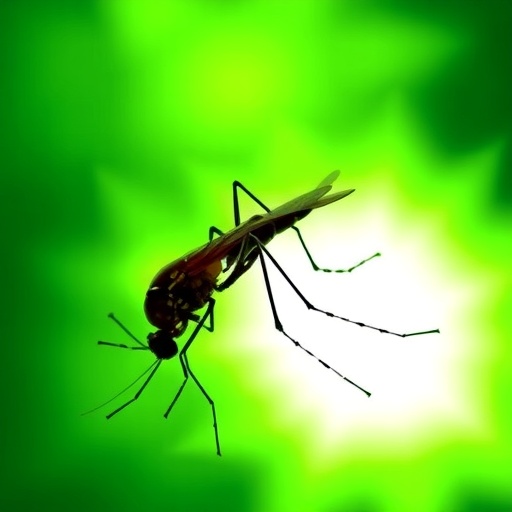In a groundbreaking study that could revolutionize the way we fight malaria and related parasitic diseases, researchers led by Professor Karine Le Roch at the University of California, Riverside, have uncovered pivotal insights into the molecular biology of Plasmodium falciparum, the parasite responsible for the deadliest form of human malaria. Their research illuminates how specific proteins within a unique parasite organelle, the apicoplast, orchestrate critical RNA processing events that are essential for parasite survival. This discovery opens new pathways for the development of highly targeted anti-malarial therapies that avoid harming human cells.
The apicoplast, an organelle found exclusively in apicomplexan parasites like Plasmodium, Toxoplasma gondii, and Babesia, represents an Achilles’ heel for these organisms. Unlike human cells, which lack this structure, the apicoplast harbors pathways vital for parasite metabolism and replication. Professor Le Roch’s team focused on two proteins within this organelle—PfRAP03 and PfRAP08—that belong to the RNA-binding domain Abundant in Apicomplexans (RAP) family. These are essential proteins that bind RNA molecules, facilitating their processing and translation into proteins critical for the parasite’s survival.
The researchers employed sophisticated genetic tools to create knockdown strains of P. falciparum, selectively silencing the genes encoding PfRAP03 and PfRAP08. The result was unequivocal: the absence of either RAP protein resulted in parasite death. This confirmed not only the proteins’ essential roles but also suggested their potential as drug targets. Remarkably, these RAP proteins were shown to interact directly with two types of RNA molecules—ribosomal RNA (rRNA) and transfer RNA (tRNA)—both indispensable for the assembly and function of the ribosomes responsible for protein synthesis within the apicoplast.
What makes these findings especially exciting is that this is the first time scientists have detailed the direct physical interaction between RAP proteins and these non-coding RNAs inside the apicoplast. “We’ve now shown mechanistically how these proteins regulate translation in an organelle that’s completely foreign to the human body,” explained Le Roch. She emphasized that humans have only six RAP proteins, whereas parasites like Plasmodium have expanded this family to over twenty. This evolutionary divergence implies that RAP proteins have parasite-specific roles, underscoring their attractiveness as targets for novel drug development.
By unraveling the precise molecular functions of PfRAP03 and PfRAP08, the study provides insight into how apicomplexan parasites control gene expression at the RNA level within the apicoplast. Ribosomal RNA and transfer RNA serve as fundamental components in the translation process, bringing amino acids to the ribosome and assembling them into functional proteins. The binding of PfRAP03 to rRNA and PfRAP08 to tRNA suggests a finely tuned regulatory mechanism that is indispensable for parasite viability. Disrupting this mechanism could halt protein synthesis, effectively killing the parasite.
The work builds on the team’s previous investigations into RAP proteins localized in parasite mitochondria, adding a new dimension by extending the analysis to the apicoplast. The detailed mechanistic understanding gained marks a significant milestone in parasitology, providing a blueprint for targeting parasite-specific molecular machinery with minimal off-target effects on human cells. This is particularly crucial in an era of increasing drug resistance, where conventional anti-malarial drugs are losing efficacy.
Importantly, the study’s implications extend beyond malaria. Other apicomplexan pathogens, such as Toxoplasma gondii, which causes toxoplasmosis, and Babesia, a parasite responsible for babesiosis—a tick-borne disease on the rise in the United States—share this specialized organelle and RAP protein family. Le Roch highlighted the potential for broad-spectrum therapies that could tackle an entire class of parasites by exploiting vulnerabilities in their unique RNA-processing systems.
The research team is now focused on determining the three-dimensional structures of these RAP protein-RNA complexes. Such structural insights will be invaluable for guiding drug design efforts, enabling the creation of molecules that can specifically disrupt the interaction between RAP proteins and their RNA partners. This strategy holds promise for the development of therapies that are highly potent against the parasites while leaving human cells unharmed, reducing side effects and improving patient outcomes.
While no drugs currently target RAP proteins, the study sets the stage for a new avenue of anti-parasitic drug discovery grounded in structural biology and molecular parasitology. By targeting essential proteins that have no counterparts in humans, the research offers a blueprint for future generations of anti-malarial drugs that could circumvent the growing problem of drug resistance and reduce the global burden of malaria and related diseases.
The study, titled “RAP proteins regulate apicoplast noncoding RNA processing in Plasmodium falciparum,” was published in the prestigious journal Cell Reports. It underscores the collaborative efforts of scientists from UC Riverside, the Stowers Institute for Medical Research, and MIT, reflecting a multidisciplinary approach that spans molecular biology, structural biology, and infectious disease research. Supported by the National Institute of Allergy and Infectious Diseases and UCR, this work exemplifies how cutting-edge science can unearth novel therapeutic targets with the potential to save millions of lives worldwide.
As efforts continue to solve the detailed structures of these RAP protein complexes, the scientific community anticipates a surge in rational drug design initiatives aimed at translating these fundamental biological insights into clinical innovations. Ultimately, this research not only advances our understanding of malaria parasite biology but also charts a hopeful course towards eradicating one of humanity’s most enduring and deadly diseases.
Subject of Research: Cells
Article Title: RAP proteins regulate apicoplast noncoding RNA processing in Plasmodium falciparum
News Publication Date: 22-Jul-2025
Web References:
References: The original research article published in Cell Reports, DOI: 10.1016/j.celrep.2025.115928
Keywords: Plasmodium falciparum, apicoplast, RAP proteins, RNA-binding, ribosomal RNA, transfer RNA, malaria, parasitology, molecular biology, anti-malarial drug targets, protein synthesis, apicomplexan parasites




